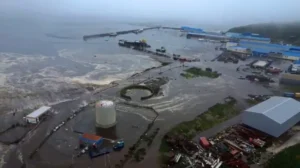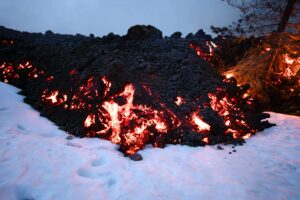Gravel-sized gypsum crystals move across desert lakebeds through a mix of wind and surface forces. These movements may seem mysterious, but science reveals a clear pattern shaped by erosion, wind power, and rare whirlwinds.
1. Where the Crystals Come From
Gypsum forms when water evaporates from dry lakebeds called sabkhas. As water leaves, selenite gypsum crystals appear. Over time, weather breaks these crystals into gravel-sized fragments. These pieces settle on flat desert surfaces, where the wind can start to move them.
2. How Wind Moves the Crystals
Desert wind acts in stages:
-
- Deflation removes dust and fine grains, exposing larger fragments.
- Saltation lifts sand grains into the air. As these grains bounce, they hit and nudge the gypsum pieces forward.
- Surface creep rolls the heavier crystals slowly along the ground.
This process works just like it does with regular sand—but on a larger scale.
3. Gravel Devils: The Power Boost
In areas like Chile’s Salar de Gorbea, spinning whirlwinds called “gravel devils” can lift and carry even foot-long gypsum crystals. These mini tornadoes reach wind speeds over 150 mph, strong enough to send crystals flying across kilometers of open land.
4. What Happens After Transport
Once airborne crystals land, they break apart and wear down. Over time, this grinding action turns large fragments into smaller grains. These grains collect into dunes, like those seen in White Sands National Park, forming a gypsum sand sea that keeps shifting with every gust.
Why It Matters
This movement explains how flat, dry landscapes fill with drifting dunes. Unlike the famous “sailing stones” moved by ice, gypsum crystals rely on wind-driven erosion and rare whirlwinds. The study of gravel devils also helps scientists understand similar events on other planets, like Mars.
Final Thought:
Gravel-size gypsum crystals move through wind, saltation, and rare whirlwinds. Over time, these forces shape the desert surface and push white dunes forward — crystal by crystal.
Share this content:












